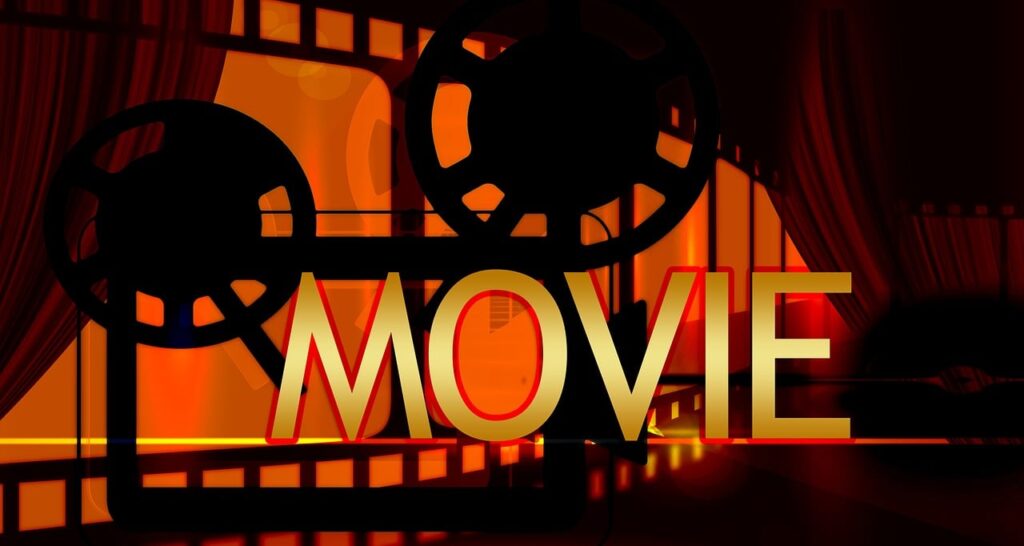
Film festivals have long served as crucial incubators for cinematic innovation and artistic expression, acting as the first platform for filmmakers to showcase their latest creations to the world. While their primary purpose is to celebrate diverse voices and foster creative exploration, these festivals also wield significant influence over the trajectory of the film industry, particularly in shaping the narratives and contenders that dominate Hollywood’s most prestigious award shows. These events transcend mere screenings; they are intricate ecosystems where artistic merit meets strategic industry maneuvering, setting the stage for a film’s journey from debut to global recognition.
As the annual cycle of awards season unfolds, a closer examination reveals the intricate relationship between film festivals and award shows, illustrating how early festival buzz can propel certain films into the limelight and set the stage for their critical and commercial success. This symbiotic dynamic underscores the strategic importance of festival premieres, critical endorsements, and industry networking in cultivating a film’s profile. For discerning industry insiders and serious enthusiasts alike, understanding these mechanisms is paramount to comprehending the complex landscape of cinematic achievement and recognition.
This article delves into the mechanisms through which film festivals impact Hollywood’s award circuit, exploring the multifaceted roles these events play in a film’s trajectory. From their historical genesis to their function as critical launchpads and economic engines, we will analyze the profound influence festivals exert, laying the groundwork for how a film can transition from a festival gem to an awards season frontrunner, ultimately shaping the narratives that define our cinematic year.

1. **The Genesis and Evolution of Film Festivals: A Historical Overview**The history of film festivals dates back to the early 20th century, with the Venice Film Festival being one of the first, established in 1932. These foundational events were initially formed as cultural gatherings designed to celebrate the art of filmmaking, providing a unique forum for artistic exchange and appreciation. What began as singular cultural statements soon burgeoned into a global phenomenon, with Cannes following suit in 1939 (effectively 1946), marking the nascent stages of their economic significance.
Following World War II, a significant resurgence of film societies and festivals occurred internationally, driven by struggling nations seeking to rebuild their shattered film industries and gain world recognition. The growing interest everywhere in film imports transformed these festivals into vital international marketplaces for distributors. This era saw the proliferation of festivals in major cities worldwide, including Berlin, Moscow, Karlovy Vary, London, Toronto, San Francisco, Chicago, and New York City, each contributing to a burgeoning global film culture and industry infrastructure.
Predating and running parallel to these festivals, film societies played a crucial role in fostering the appreciation of film art and emphasizing its social dimension. Early ciné-clubs, often comprising luminaries from film and other arts, sought to showcase foreign and art-house pictures not handled by commercial exhibitors. While their importance inevitably declined with the advent of university film studies and home video formats, these societies laid much of the cultural groundwork, creating an informed audience and critical discourse that proved indispensable to the eventual widespread acceptance and strategic importance of film festivals.
2. **Impact of Premieres: Generating Award Season Buzz**Film festivals have long served as a critical launching pad for films vying for recognition during Hollywood’s award season. Premiering at a top-tier festival grants films early visibility, positioning them in the spotlight before the crowded award season truly begins. This initial exposure is not merely about exhibition; it’s a carefully orchestrated debut that allows critics, industry insiders, and audiences to form early opinions, which can profoundly shape a film’s trajectory. Festivals such as Cannes, Venice, and Toronto are among the most influential, frequently setting the stage for the films that will dominate conversations in the months leading up to the Oscars, Golden Globes, and BAFTAs.
The early visibility conferred by a prestigious festival premiere is a strategic asset. Positive reviews and accolades from these initial screenings are instrumental in building momentum, effectively turning a film into a must-see contender. A strong critical reception at a major festival can generate invaluable buzz, signaling to the wider industry and public that a film possesses significant artistic merit. This critical endorsement becomes a powerful narrative, attracting further attention and investment as the award season progresses.
Beyond critical attention, festivals are hotspots for networking and media coverage, amplifying a film’s profile. Extensive media attention surrounding festival debuts can dramatically increase a film’s appeal, making it more attractive to award voters who are often influenced by the prevailing industry narrative. Concurrently, the networking opportunities at these events allow filmmakers to connect with key players—producers, distributors, publicists—who can strategically influence and drive award campaigns, translating early buzz into sustained recognition.
3. **The Critical Gatekeepers: Role of Critics and Jurors in Oscar Trajectories**Film critics and festival jurors play an undeniably pivotal role in the trajectory of films as they journey toward Oscar contention. At the forefront, film critics act as the first line of assessment, providing initial reactions and reviews that can significantly influence a film’s reception. Their critiques, often published shortly after a film’s premiere at a festival, are crucial in shaping the narrative around a work, generating an initial buzz that helps establish a film as a talking point within the industry.
Positive critical reception is instrumental in guiding the opinions of Oscar voters, who may be swayed by the emerging critical consensus. This initial wave of endorsements from respected voices can validate a film’s artistic merit, making it easier for Academy members to consider it seriously. A cohesive and strong critical narrative originating from a festival premiere often provides the necessary foundation for a film’s awards campaign, creating a compelling case for its consideration.
Festival jurors bring a distinct yet equally important perspective to this process. By awarding films with prestigious accolades at major festivals like Cannes, Venice, or Toronto, jurors can propel films directly into the spotlight. These awards serve as a powerful seal of approval, signifying a level of artistic or technical achievement that demands attention. Films garnering significant festival recognition often find themselves squarely on the radar of Oscar voters, who are actively seeking works already vetted by esteemed peers and celebrated within the global cinematic community.
4. **Festival Wins as Oscar Predictors: Analyzing the Correlation**Film festivals often serve as a preliminary arena for films seeking recognition at Hollywood’s prestigious award ceremonies, establishing a discernible correlation between early festival triumphs and later Academy Award success. Industry analysts frequently observe the strategic positioning of film releases to align with festival schedules, recognizing that a strong showing can significantly bolster a film’s visibility and credibility. The timing of these festivals, often months before the core awards season, provides an ideal platform for films to gain critical momentum.
Several key elements contribute to the influence of festival wins on Oscar success, extending beyond mere recognition. Films that resonate well with festival juries often gain critical endorsements, which are an exceptionally valuable currency during the intense award campaigns. These initial accolades from respected festival bodies act as a powerful validation of a film’s artistic quality, providing persuasive evidence for Academy voters to consider its merits seriously.
A festival win invariably leads to a substantial publicity boost, translating into increased media coverage and heightened awareness around the film. This amplified buzz is crucial in the crowded awards landscape, making the film more visible and memorable to a broader audience and, crucially, to the voting bodies. Furthermore, festivals serve as vital hubs for industry professionals, offering filmmakers and producers unparalleled opportunities to network and strategize for the Oscars, leveraging their festival successes into actionable award campaign plans. While not a guaranteed predictor, the strong correlation underscores the strategic importance of these events in a film’s award season journey.

5. **Strategic Circuits: Paving the Path to Award Show Potential**The navigation of film festival circuits is often a highly strategic endeavor, meticulously planned by filmmakers and distributors to maximize a film’s potential for awards and commercial success. This involves more than simply securing a premiere; it necessitates a deep understanding of each festival’s unique character, audience, and industry influence, along with the precise timing required to build and sustain momentum leading into the award season. The choice of which festival to premiere at, and in what capacity, can critically impact a film’s future trajectory.
A fundamental distinction underpins this strategic approach: “While movies competing at festivals are being shown for the first time, awards give prizes to films already released to the general public.” This difference is paramount. Festivals function as “markets” where unreleased films are introduced to the industry, whereas awards like the Oscars celebrate films that have already completed their public exhibition run. Understanding this temporal and functional divergence is crucial for tailoring an effective strategy that bridges the gap between a film’s debut and its potential award recognition.
This distinction translates directly into practical strategy for award maximization. Being selected for a prestigious film festival almost definitely ensures a distribution deal, which is why these events are such a significant deal for the industry. Distribution is a necessary step for producers to see their movies in theaters, and without it, a film often cannot even qualify for major awards like the Oscars. Therefore, the strategic selection and successful showing at a festival are not just about winning early accolades; they are about securing the fundamental market access that allows a film to even enter the awards conversation, thereby paving an essential path to its potential award show success.

6. **Prestigious Launchpads: Major Festivals and Their Influence (Cannes, Venice, Berlin)**Among the multitude of film festivals worldwide, three stand out as the undisputed giants, often referred to as “the big three”: Cannes, Venice, and Berlin. Having a movie in one of these competitions is the end goal of nearly every film producer globally, a feat arguably more important than winning an Oscar for its immediate impact on a film’s monetization and industry standing. These festivals serve as unparalleled launchpads, each with its unique characteristics and profound influence on the cinematic landscape and subsequent award runs.
The Cannes Film Festival, born in 1938 and held annually at the end of May, derives its immense importance from its role as the “opening” of the new film season. It serves as the prime venue where the most important authors of the industry present their movies for the critical US summer release window, which is often the most profitable period for the American box office. Consequently, films selected for the official competition are predominantly from “big names,” leveraging the festival’s glamorous stage to generate maximum global exposure and critical anticipation.
The Venice Film Festival, the world’s oldest, opening for the first time in 1932 between August and September, is considered the beginning of the “award season,” which culminates with the Oscars in March of the following year. It also primarily selects “big names” for its competition, maintaining a fierce rivalry with Cannes for selecting the most prestigious slate each year. In contrast, the Berlin Film Festival, or Berlinale, which takes place in February, distinguishes itself as the world’s biggest platform for independent authors and filmmakers, renowned for selecting some of the most creative and innovative movies of the year, irrespective of their production scale or directorial fame.

7. **How Film Festivals Influence Movie Trends**Beyond launching films into the awards circuit, film festivals function as crucial barometers for cinematic trends. These prestigious events serve as early indicators of new styles, themes, and genres resonating with critics and the public. The rise of independent films in the late 1990s and early 2000s, exemplified by *Lost in Translation* and *Little Miss Sunshine*, links directly to the recognition these features first garnered at festivals like Sundance. Such platforms provide vital space for innovative storytelling, often challenging mainstream norms and introducing fresh narratives and technical approaches.
The influence of festivals extends significantly to the mainstream popularity of documentary filmmaking. Historically, documentaries were niche, but strategic showcasing at prominent festivals has altered this perception. Landmark documentaries like *An Inconvenient Truth* and *Bowling for Columbine* received widespread critical acclaim and substantial public attention following premieres, highlighting pressing social and political issues. This success validated the artistic merit of the documentary format, encouraging more filmmakers to explore non-fiction storytelling and broadening its audience base.
Film festivals have been instrumental in championing diverse and inclusive cinematic voices, contributing to a broader industry trend toward enhanced representation. Festivals such as TIFF and Tribeca consciously promote films with diverse casts and stories from underrepresented communities. This concerted push for diversity from the festival circuit has generated a ripple effect throughout the wider industry, encouraging studios and independent filmmakers to embrace a more expansive range of perspectives.
Read more about: The Billion-Dollar Echo: How Savvy Brands Are Monetizing Nostalgia to Capture Hearts and Wallets
8. **Showcasing Independent and International Cinema**Film festivals hold particular significance for independent and international filmmakers, providing indispensable platforms where their distinctive works can be seen, celebrated, and often distributed. For many independent filmmakers, these festivals unlock opportunities largely inaccessible within the conventional movie industry, which is frequently dominated by major studios. Renowned festivals like Sundance, Toronto, and South by Southwest built reputations on showcasing independent films, affording them vital exposure. Groundbreaking independent features such as *Moonlight* and *The Florida Project* exemplify films that built momentum and garnered acclaim through their festival runs, paving the way for wider recognition.
A pivotal role film festivals fulfill is bringing international cinema to the forefront, introducing diverse audiences to films they might otherwise never encounter. As the question, “How do film festivals contribute to the diversity of cinema?” highlights, these events foster a global film culture rich in varied perspectives. Esteemed festivals like Cannes and Venice are celebrated for their meticulously curated, diverse lineups, featuring cinematic works from every corner of the globe. This international focus broadens audience horizons and cultivates a deeper appreciation for diverse narrative forms. Films such as *Roma* and *Shoplifters* benefited from this international spotlight, achieving widespread acclaim and reaching global audiences through their festival presence.
In essence, film festivals stand as vital platforms for independent and international cinema, offering unparalleled opportunities for filmmakers to present their work globally. They promote diversity and inclusivity within the film industry, highlighting stories and perspectives that might otherwise go unnoticed. The exposure and recognition films acquire at these festivals are instrumental in shaping their success and influencing broader trends. These events transcend mere screenings; they are crucial incubators for talent and innovation in the global cinematic landscape.
Read more about: From Workhorse to Wealth: Unpacking the Phenomenal Rise of Classic Trucks in the Collector Market
9. **Networking and Collaboration: The Industry’s Crucial Hubs**Beyond glittering premieres and critical discourse, film festivals serve as indispensable networking hubs where filmmakers, producers, distributors, and other industry professionals converge. These events provide unparalleled opportunities for profound collaboration and new partnerships, frequently acting as the genesis for future film projects. At premier festivals such as Cannes and the Berlinale, networking events, panel discussions, and social gatherings facilitate crucial connections that often blossom into fruitful collaborations. For instance, the partnership between Darren Aronofsky and Natalie Portman, culminating in *Black Swan*, was reportedly initiated at a film festival. Countless independent filmmakers secured producers and funding for projects directly through connections cultivated at these dynamic environments.
The profound significance of these networking opportunities, particularly for new and emerging filmmakers, cannot be overstated. Festivals offer a unique and concentrated platform where aspiring artists can pitch ideas, showcase talent, and potentially secure essential support to transform their cinematic vision into reality. This facet is critical in an industry where professional connections can be as pivotal as talent or knowledge.
Film festivals thus present a singular setting where professional networks can be meticulously built and nurtured, often leading to enduring collaborations that extend across multiple projects and years. These interactions foster community and shared purpose, moving beyond transactional exchanges to create a foundational ecosystem for creative synergy and long-term professional development. Serendipitous encounters and structured meetings contribute to an environment ripe for innovation, where the next generation of cinematic masterpieces can begin their journey.
10. **The Economic and Social Impact: Beyond the Silver Screen**Film festivals’ influence extends beyond artistic recognition and industry networking, encompassing significant economic impact on host local economies and the global film market. Host cities frequently experience a substantial surge in tourism and heightened business activity, benefiting local hotels, restaurants, and auxiliary businesses. The Sundance Film Festival, for example, is a major economic contributor to Park City, Utah, annually drawing thousands of visitors and generating millions in vital revenue. Cannes is recognized for its substantial economic impact on the French Riviera, through direct spending and enhancing the region’s allure as a tourist destination.
The question, “What is the economic significance of hosting a film festival?” underscores broader economic implications. Beyond immediate visitor influx and spending, film festivals actively shape the global film market. They serve as crucial venues where pivotal deals are brokered, films bought and sold, and distribution rights negotiated. These transactions considerably impact the financial success of involved films and, by extension, the studios and independent filmmakers. The buzz and prestige from a triumphant festival run dramatically amplify a film’s marketability and enhance its box office potential, contributing to the movie industry’s economic landscape.
Moreover, film festivals frequently serve as powerful platforms for social and political commentary, offering filmmakers opportunities to present works addressing pressing global issues. These events craft spaces where cinema transcends entertainment, evolving into a potent medium for influencing public discourse and heightening critical awareness. Esteemed festivals like TIFF and Berlinale are lauded for showcasing films tackling themes from human rights and environmental challenges to social injustice and political oppression. Cinematic works such as *The Square* and *An Inconvenient Truth* gained significant attention and impact precisely through strategic festival screenings.
By highlighting movies confronting critical social and political themes, film festivals fulfill a crucial role in bringing these issues to the forefront of public consciousness. This platform can spark essential discussions, potentially influencing policy shifts, and actively driving tangible social change. Recognition and awards bestowed upon such films at these festivals substantially elevate their stature, leading to wider distribution and enhanced visibility. This symbiotic relationship between artistic merit and societal impact underscores the multifaceted value of film festivals.
Read more about: The Infinite Adventures of a Phenomenon: Inside the Enduring Legacy of Adult Swim’s Rick and Morty
11. **Critical Challenges and Criticisms Facing Film Festivals**Despite their undeniable contributions, film festivals face inherent challenges and criticisms. One pervasive issue is accessibility. Many festivals face scrutiny for being overly exclusive, often catering primarily to established industry insiders and leaving minimal room for the public or independent filmmakers with limited resources. This perceived exclusivity can create barriers to entry for new talents and diminish the diversity of voices within the festival circuit.
Another significant criticism concerns the often-opaque selection process for films. Questions are regularly raised regarding the transparency and fairness of how cinematic works are chosen, with some suggesting festivals exhibit bias, favoring established filmmakers and major studios over independent artists. This inclination can lead to homogeneity in showcased films, potentially stifling innovation and limiting diversity in cinema.
Furthermore, film festivals confront considerable challenges in adapting to the rapidly evolving digital age. With the rise of online streaming platforms and accelerating digitization of content distribution, festivals are compelled to re-evaluate traditional formats and distribution models. The COVID-19 pandemic significantly accelerated this shift, prompting many festivals to explore innovative digital formats. While this transition opened new opportunities for broader audience engagement, it ignited crucial discussions about the enduring relevance of film festivals in an increasingly digitalized global cinematic world.
Read more about: The Enduring Power of a Name: Unveiling the Lives and Latest Chapters of Notable Williams, from Royalty to Hollywood’s Beloved Icon

12. **The Future Trajectory of Film Festivals in a Digital Age**As the film industry evolves within the digital age, festivals are undergoing significant transformations. The rise of online streaming and increasing digitization of content distribution presented novel challenges and opportunities. Recent global events, notably the COVID-19 pandemic, accelerated this shift, compelling festivals to explore innovative digital formats. Virtual festivals emerged, offering online screenings, VR experiences, and crucial digital networking opportunities. This transition democratizes festivals, making them more accessible to a wider global audience, and providing an expanded stage for filmmakers lacking resources for in-person events.
The future trajectory of film festivals is envisioned as a hybrid model, seamlessly combining physical screenings with digital components. This integrated approach expands festivals’ reach, enabling global audiences to participate and engage with films and filmmakers. Digital platforms offer new avenues for interactive experiences, such as live Q&A sessions, virtual workshops, and online panel discussions.
However, a significant challenge remains in meticulously preserving the unique atmosphere, serendipitous encounters, and invaluable networking opportunities intrinsically provided by physical festivals. These elements are widely considered integral to the quintessential festival experience and its deep industry value, offering an irreplaceable human element that digital formats struggle to replicate fully. The careful balancing of technological advancement with traditional strengths will define the success of future festival iterations.
Read more about: Here’s What Really Happened To Elizabeth Berkley: An In-Depth Look at Hollywood’s Toughest Reckonings and Redemption
Film festivals play a vital and multifaceted role in the movie industry. They are essential platforms for launching films, setting trends, showcasing independent and international cinema, and fostering networking. They also exert significant economic impact and serve as important venues for social and political commentary. However, these institutions face challenges, including accessibility and adapting to the digital age. As festivals evolve, their capacity to shape the cinematic landscape, discover new talents, and bring diverse stories globally will persist. Their adaptation to industry changes and audience needs will determine their relevance. For enthusiasts and professionals, festivals offer a window into cinema – rich in diversity, creativity, and innovation. For more insights, visit What’s After the Movie (ATM) and stay tuned to our blog for more in-depth articles that explore various aspects of the film industry.










